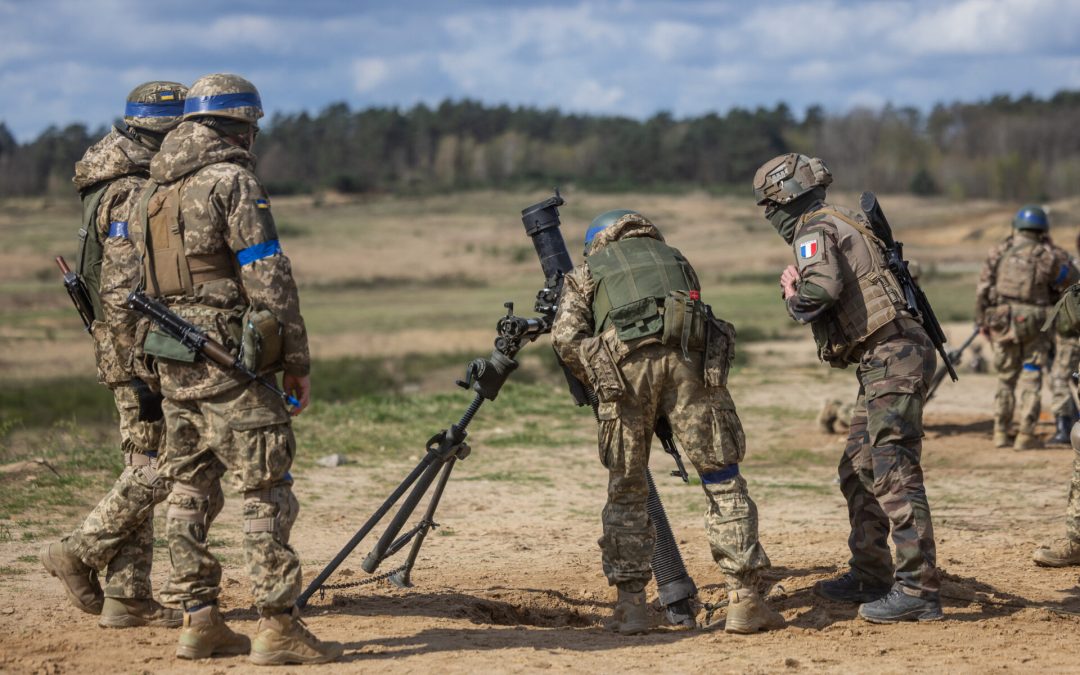Brussels – The EU budget for military mobility is still “relatively modest” compared to the needs, stated the President of the EU Court of Auditors (ECA) Tony Murphy during a press conference on Wednesday. The latest ECA report presented at the time still shows major obstacles to “military mobility” within the EU, i.e., the movement of troops or equipment across internal borders. The corresponding EU action plan is not efficient.
The objectives in defense have shifted: “War has returned to the continent,” said Murphy. Logistics is an essential part of military operations: “It is often said that logistics win wars.” According to the latest ECA report, the EU countries’ armed forces are still not able to move quickly within the entire EU. In the EU budget 2021-2027, funds specifically for transport infrastructure with civil-military dual use were provided for the first time.
The strategic need for catch-up in military mobility for the EU has become particularly urgent due to Russia’s war of aggression against Ukraine. The second action plan on military mobility, then “published under time pressure” by the European Commission in November 2022, suffers “from conceptual weaknesses,” the auditors criticize. They therefore urge the European Commission to monitor its implementation more closely and to evaluate progress and problems more accurately.
“Military mobility is crucial for a credible EU defense capability, and it must clearly move forward more quickly. The required pace has not yet been reached because there are always obstacles,” said Marek Opioła, the Court of Auditors’ member responsible for the report. Bureaucratic obstacles often hinder the movement of military units: for example, tanks from one EU country cannot move through another if they are heavier than permitted by local traffic regulations.
Funds run out long before the deadline
The auditors also found that the European Commission had not adequately analyzed the demand in advance when drafting its action plan. With a total of 1.7 billion euros for the period 2021-2027, the EU budget for military mobility is relatively low. Although the EU quickly made the funds available and sent an important political signal, the demand far exceeded the supply, with the funds running out as early as the end of 2023. This created a funding gap of more than four years. Court of Auditors President Murphy stated that one problem for the EU countries is that there is “no central contact point” to coordinate EU measures in the field of military mobility. The Court of Auditors therefore recommends establishing such a coordinating body.
To close the current and future funding gaps, the Commission should find ways to finance dual-use infrastructure projects under the multiannual EU budget, such as with resources from the transport sector, according to another recommendation of the report.
Geopolitical and military factors as well as the strategic importance of locations were not sufficiently taken into account in the selection of funded dual-use infrastructure projects, the auditors further criticize. The EU mainly funded projects in the east of the Union and hardly any projects on the southern route towards Ukraine. Austria did not apply for EU funds for dual-use infrastructure projects that provide for both civilian and military use, and was therefore not among the EU countries audited.
Trans-European Transport Network also runs through Austria
However, four core network corridors of the Trans-European Transport Network (Rhine-Danube, Baltic-Adriatic, Scandinavian-Mediterranean, and Western Balkan-Eastern Mediterranean) pass through Austria; EU funding for (civilian) TEN-T transport projects in Austria is not uncommon. To improve military mobility within the EU, Austria participated in a project to simplify and standardize cross-border military transport procedures.
The individual EU states are responsible for the territorial defense of the EU. NATO also plays an important role in this; 23 of the 27 EU members are also in NATO. According to the 2024 review by the European Defense Agency, total defense spending of EU member states is expected to increase by more than 30 percent compared to 2021 to an estimated 326 billion euros in 2024, reaching a “previously unprecedented share” of 1.9 percent of the EU’s GDP. (02.06.2025)
 go to the original language article
go to the original language article
